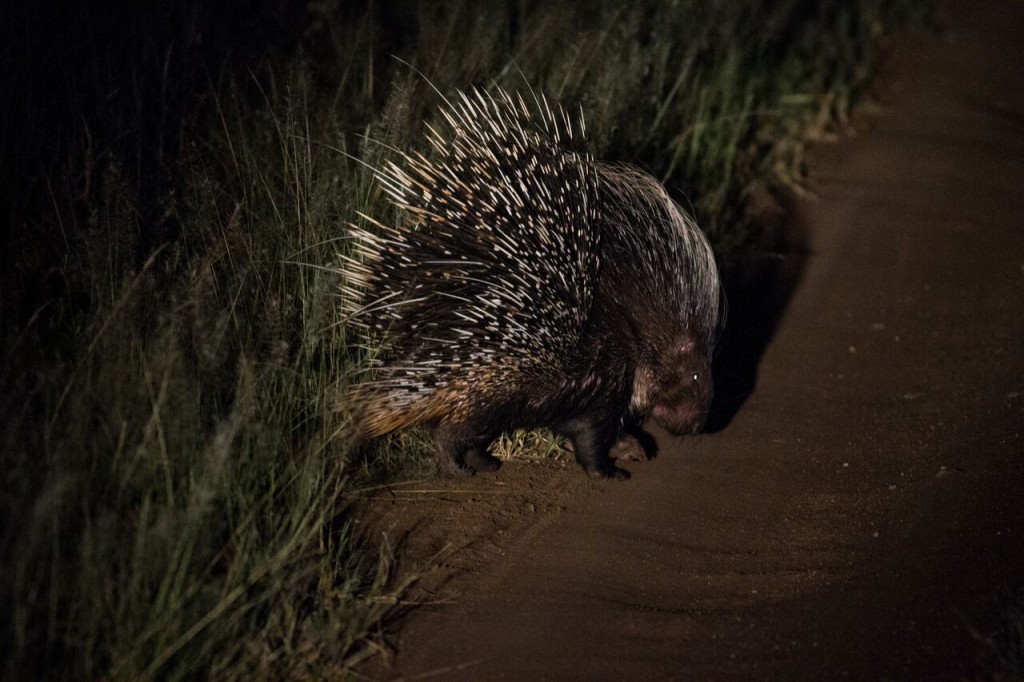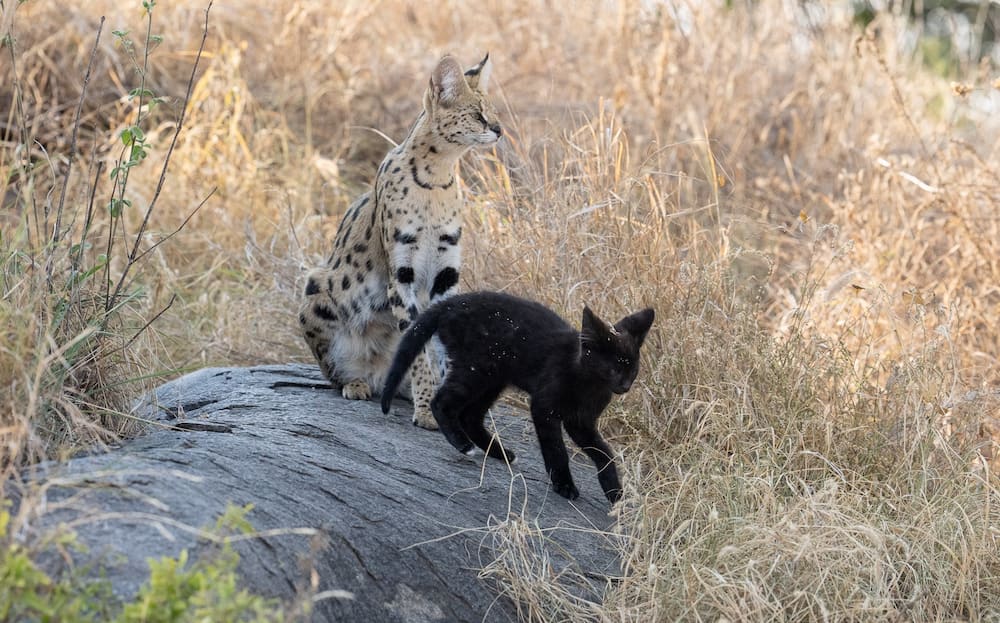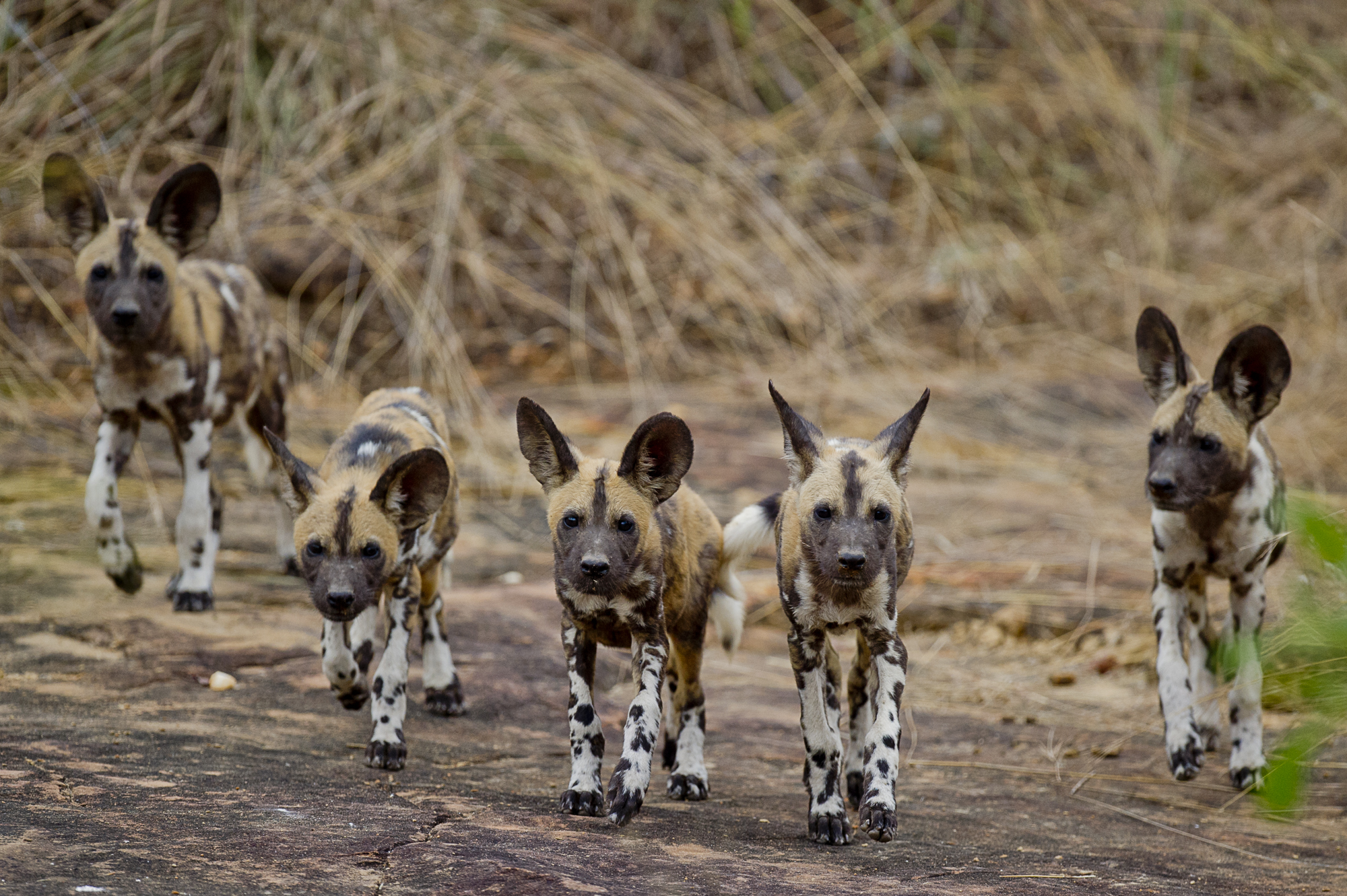From the field | Five elusive African safari animals
Many of us have a bucket list of African safari animals to check off, which usually involves the Big 5 or The Great Migration. However, there are many elusive animals that are considered prized sightings purely due to their scarcity. We asked some of our guides about their favourite elusive African safari animals and narrowed it down to the following five to add to your African safari checklist.

The aardvark is seldom seen during the day but makes for an exceptional nighttime encounter.
The Aardvark
Aardvark, directly translated from the South African language, Afrikaans, means “earth pig”. However, this animal is not part of the pig family as its name suggests. The aardvark is a burrowing, nocturnal mammal. Similar to the pangolin, they have a long sticky tongue to easily eat termites and ants, which is their favourite food. Their large front claws are used to dig holes, as well as for protection.
The aardvark is a medium-sized animal, reaching lengths of up to 1.3 meters and a maximum weight of 80 kilograms. Their gestation period lasts for approximately seven months; whereafter one pup is born – hairless with their eyes open, only leaving the burrow after two weeks. Aardvarks are nocturnal beings, and you are most likely to spot one while you’re out on a night game drive, especially during the wetter months of the year when there are lots of grubs and insects for them to feast on. Oliver's Camp, in Tarangire National Park, offers night game drives and the best opportunity of spotting this elusive African safari animal.
The Pangolin
Sadly, known as the world’s most trafficked mammal, members of the pangolin species are either listed as endangered or vulnerable. There are only eight species in the world, four of which are found on the African continent and four species which are found in Asia. The primary threat to pangolins is poaching and hunting for illegal wildlife trade. They are predominantly poached for their meat which is considered a delicacy in countries such as Vietnam and China. They are also hunted because of a false belief that their scales can be used as a treatment for various medical problems.

Seldom seen but highly prized, the pangolin is one of Africa's most unique African safari animals.
Ants and termites are a pangolin's favourite source of food. Their tongues are often longer than their bodies, reaching lengths of up to 40 centimetres, making it easy for them to reach the inside of an ants nest or a termite mound. The scales of pangolin are made from keratin, the same substance as our fingernails, but these overlapping scales create a protective armour-plated exterior. When a pangolin feels threatened, they will curl themselves up into a ball to protect themselves. Although classified as nocturnal, pangolin are often spotted in the early morning and late afternoon, especially within the open grasslands surrounding Namiri Plains.
The Porcupine
This prickly animal is fairly common but rarely seen during the day, although lost quills are often found during walking safaris when greater attention is paid to what lies on the ground before you. If you do spot a porcupine roaming around in the sunshine, it is usually because they are ill or something has scared them out of their burrow – porcupines are known to spend several days at a time hidden in their dens, especially if the weather is bad.

When threatened, a porcupine will show you its back, full of erect quills. [Image: Stuart Butler]
Porcupines may not look related, but they are rodents from the same group of species as rabbits, mice and squirrels. A porcupine’s most obvious feature is, of course, its quills. Some animals have up to 30,000 quills on their body. Contrary to popular belief, the quills are not projectiles which can be "shot". Instead, when the porcupine feels threatened, it will tense up, causing the quills to bristle outwards in a threatening manner. Each quill has tiny barbs, allowing it to hook into the pierced skin of the attacker, making it very hard to remove. A night game drive from Naboisho Camp provides a good opportunity to encounter this spiky rodent.
The Serval
Frequently mistaken for a cheetah or genet, this African wildcat has a slim body, with long legs and the biggest ears in the world of cats. The serval is generally found in areas close to the water and prefers the busy plains with tall grass so that they can easily hide and sneak up on their prey. Serval sightings on safari are less common and the best time to see them is in the first half hour after sunrise and just before sunset, also known as the ‘golden hour’ amongst photographers.

An adult serval with its melanistic kitten in the eastern Serengeti.
The hunting technique used by serval involves jumping up to 3 meters into the air and using its front paws to catch their prey. They mainly eat rodents and birds, but on occasion, they snack on frogs and insects or even use their long forelimbs to hook fish out of water. The grassy landscape around Namiri Plains provides the perfect habitat for serval, where black melanistic serval have also been spotted.
The Wild Dog
Wild dogs are native to sub-Saharan Africa and, unfortunately, are also classified as endangered. They face threats such as habitat loss due to overpopulation by humans, threats from other predators, and health issues such as rabies. The scientific name for a wild dog, Lycaon pictus, literally translates to 'painted wolf', which perfectly describes the appearance of the African wild dog.


A pack of wild dog in Nyerere National Park.
Despite being high on many enthusiasts' checklist of African safari animals, wild dog are notoriously hard to spot. They can cover an enormous territory, making it difficult to predict their movements. The only time a pack can regularly be found in the same location is during the first three weeks after pups have been born when a den is being used. If you are lucky enough that your safari coincides with this period, you will likely tick these elusive animals off your checklist. Nyerere National Park holds one of the largest populations of wild dog in Africa, with Roho ya Selous offering the perfect base from which to explore.
With so much biodiversity across different regions of East Africa, it becomes impossible to compile a complete checklist for a single safari. However, this gives you the perfect excuse to return time and time again in search of your most sought-after African safari animals.
More Wildlife & Conservation Articles

Leopard vs Cheetah : Can You Tell The Difference
01 April 2020How often do you mistake a leopard for a cheetah or vice versa? I’m sure we’v...

What’s the difference? National Parks, Game Reserves, and Conservancies in East Africa
02 February 2020To most of us, a national park, game reserve, or conservancy are all the same...

Electric Vehicles: The Future Of East African Safari Travel?
12 January 2020October 2019 saw the arrival of our first electric, solar-powered safari vehi...

Guest Gallery: The Serengeti At Its Best
27 November 2019We recently had the pleasure of welcoming guests, Chris and Monique Fallows t...




